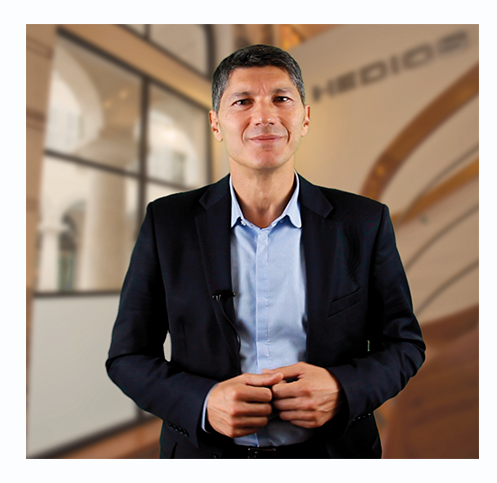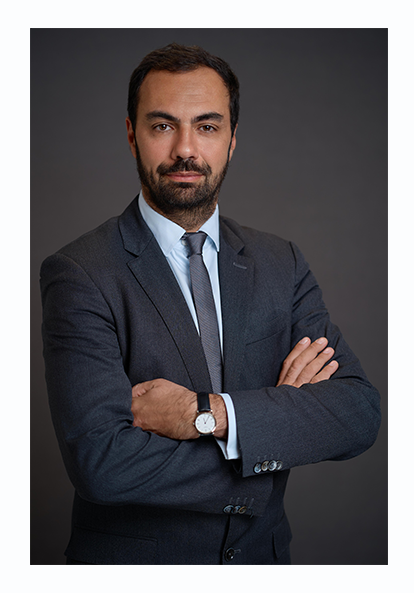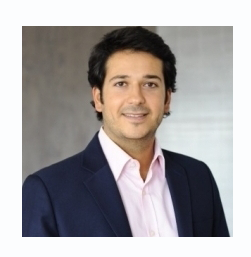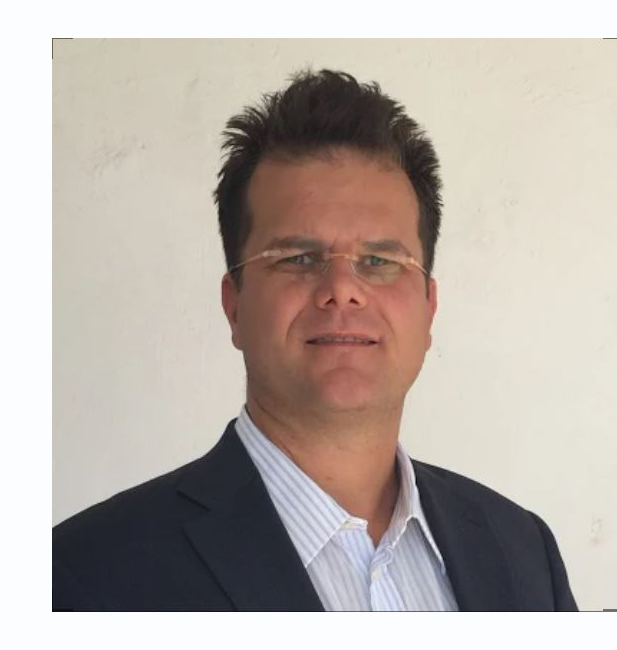French distributors are betting on the open architecture approach and the capital protection profile of structured products to continue growing the retail market. SRP looks at the benefits of open architecture and profit-motivated retraction, which has long been part of the distribution of structured products in France.
The first, and currently prevailing, logic of distribution in the French market is the open architecture approach, according to Pierre Guys (pictured), founding partner at Zenith Capital.
“It is embodied by the historic banking players (who both issue and distribute), but is also the logic of distributors who, independent from banks and insurance companies, engage in the same optic of pushing the asset class,” says Guys, noting that, whether independent and not, French distributors will remain very committed to open architecture. “The second logic is more exclusive as some insurance companies or platforms are tempted to re-internalize the margin [at the level of the insurer]. This usually happens via the acquisition of formerly independent structures or their teams; therefore at distributors’ expense.”
The supply of intermediation in the structured products market has always existed but the number of brokers keeps increasing, says Frédéric Plessas, head of investment solutions at Hedios Patrimoine.
“This is the result of the growing success of this asset class, given the low interest rates and the high levels of the other asset classes,” he tells SRP.
Brice Gimeno (right), founder and president at DS Investment Solutions, which raised €231m from structured products in 2019, agrees that there has been a proliferation of competing intermediaries on the back of “investors’ growing appetite for bespoke solutions, which makes the number of products itself rocketing”.
On the flip side, 2019 was marked by two important acquisitions, notably life insurance Nortia’s acquisition of a stake in structured product distributor Nexo Capital and social protection group Apicil’s as a stakeholder on Equitim.
“Both acquisitions facilitate the referencing of products, with insurance companies building their own teams to populate the structured products space. Still, insurance companies’ focus remains on campaign products, as they generally lack the agility required for bespoke solutions,” says Arnaud Schmitz, cross-asset sales at Makor Securities.
Market expectations
Industry players are unanimous in their positive forecast for the structured products market in 2020 which is expected to be driven by a pressing need for new alternative investments and a move away from hitherto flagship for French life-insurance euro account (fonds euro).
The rationale behind the French capital-guaranteed life insurance investment model (via euro-fund accounts) has been put into question due to the very low interest rates, according to Hedios’ Plessas.
“As a result, insurers had to sharply lower remuneration on euro funds, putting in place important restrictions of their flows at the benefit of a minimum investment in unit-linked vehicles [which more invested in equities, are expected to be more lucrative but also riskier],” he says. “Structured products are seen as a suitable solution and chances are that an offering with solid capital protection will get traction with risk-averse investors, even if it means serving low yield.”
On the equity markets, we expect a return to a slightly higher volatility regime, which would allow for opportunistic structuring - Pierre Guys
Zenith Capital anticipates a significant increase in the sales volumes from capital sitting in the savings market. “Next to the very much counted upon early redemptions and rollover opportunities, we expect the growth to come particularly from the transformation of a number of euro-fund accounts,” says Guys. “On the equity markets, we expect a return to a slightly higher volatility regime, which would allow for opportunistic structuring. Besides, we anticipate a spur of innovation in the underlying universe, but we think the novelty will also touch the length of maturity of the proposed structures.”
Because the falling interest rates, the stated maturity of products has lengthened to reach 12 years across six percent of the issuance in 2019 (three percent in 2018), according to SRP data. The number of products with 10- and eight-year terms remained unchanged from last year, which had a 59% and 14% market share, respectively. This explains the success of defensive income structures, which would secure a coupon even in falling markets.
“Our products’ ease of referencing and subscription will further be decisive for the growth,” says Guys. “With regard to the market players involved, we anticipate more selectivity in the established commercial relationships, which are currently hurting for increased administrative and regulatory monitoring.”
Shift in preferences
Structured products’ ability to deliver long-term returns in different market environments favours them as a way to respond to the new problematics and explains the growing interest from investors in France looking for alternative investment solutions to address a variety of investment needs.
“There is a strong development in the demand for income products, yet sometimes getting curbed [conditional on the underlying] by insurance companies, who only accept products launched as a public offer and turn down products with four calculation mechanisms [in the payoff],” says Zenith Capital’s Guys. “We see in it a real sticking point worth considering to scrap in the best interest of insurance policy holders. The demand for capital protection remains essential for the vast majority of clients, asserting the value of the [structured products] asset class in a diversified allocation.”
Structured products are pivotal in the current environment with their appeal increasingly strengthened, according to Guys. “We offer a full gamut of strategies to our clients ranging from the most defensive to the most hawkish ones. More specifically, we propose non-directional ploys or thorough research on the underlyings, particularly around the theme ‘Value’,” Guys says.
The bourgeoning interest for sustainable investments (ESG/SRI themes) is “making the environment favourable for the distribution of products with these features,” according to Yoni Kabalo (right), founding partner at i-Kapital.
“Considering the rising markets, we offer alternatives in the segments that have not fully benefited from the rise, as well as autocall structures with triggers set in negative territory,” says Kabalo. "In both cases, the idea is to boost the probabilities of early redemption and coupon for our clients”.
Next to it, i-Kapital has launched a fully capital guaranteed product “which is an ideal substitute to euro or monetary funds, and also seeks to secure part of the gains on the unit-linked bucket [of life insurance contracts]”.
Hedios Patrimoine’s note a large majority of the offering shifting towards the Phoenix-type income products or the autocalls.
“The level of capital protection has also tended to increase, in many cases absorbing a fall of up to 50% in the underlying at maturity. The headline rate, itself, fluctuates around six percent pa,” says Plessas.
“Our products allow to offer coupons even in declining markets or guaranteed coupons in the first couple of years [even if the product has not autocalled],” says DS IS’ Gimeno. “We thereby seek to reduce the exposure to the equity market and to strengthen the capital protection (up to a possible 40% and 50% fall of the index) at maturity.”
In addition, DS IS is offering products with much closer call observations dates - quarterly or daily [from the first year onwards] – “in order to optimise the probability of early exit”. DS IS is also working on an undisclosed “innovative solution” which will be brought to market in Q2 2020.
Pricing environment
Although certain currencies allow a workaround the near-zero interest rate environment, currency-denominated products in foreign currencies are often reserved for an elite, according to Guys. “This makes the volatility or the dividends all the more critical in the structuring and pricing of the future bestsellers,” he says.
To maintain potentially attractive returns a number of providers including Hedios Patrimoine are using optimized indices, including the MSCI Euro 50 Select 4,75 % Decrement, Euro iStoxx 70 Equal Weight Decrement 5 %, S&P Euro 50 Equal Weight Synthetic 5 % Price and Euronext Eurozone 40 EW Decrement 5 %.
“We make sure we position ourselves exclusively on indices almost perfe
Kabalo notes that the firm’s open architecture allows it to access “the most innovative solutions in the market”.
“Choosing the right underlying and building an efficient payoff are key to secure an attractive return while maintaining a controlled risk in this complicated environment,” says Kabalo.
Others, such as Makor Securities are seeking to play around volatile underlying stocks prone to pay a good dividend. “We further focus on products with exposure to several uncorrelated sectors,” says Schmitz. “Our research and stock-picking capacity can be very instrumental in finding performance. This year, we will focus on the development of its direct clientele including business owners, treasurers and financial advisers in France. We also work to enlarge our referencing on platforms.”
Multi-issuer platforms
The emergence of issuance platforms allowing online pricing, or even execution, for relatively simple structures and underlyings has been notable in France over the last couple of years. As with any form of ‘uberisation’ there is the will to show better transparency and more competitive prices according to Plessas (below).
Plessas believes such offer may initially appeal to certain investors or advisers for limited tranches “although it is probably early days to validate the model”.
“Marketing support and product life cycle monitoring could also be sticking points,” he says. “For a start, such [multi-issuer platforms’] offer could be complementary to the issuers’ marketing teams’, thus allowing them to reach clients they would not otherwise address. For established distributors, the relationship will remain important, given that, as a rule, distributors make a call for tenders and therefore put the issuers in competition.”
As an independent distributor, Zenith Capital already offers the benefit of making calls for tenders and optimize clients’ cross-issuers structure.
“Our approach is also much upscale than the simple price,” says Guys. “In fact, what is inaccurately presented as an innovation is anything but a novelty. Multi-issuer platforms have existed for a long time in many geographies with mixed success. Hence, my opinion would vary depending on the region, the existing intermediation model and the respective regulatory environment.
“We also note that such platforms have extremely limited traction in France; their service is not part of the primary needs of our clients, chiefly due to their execution model, which is not well adapted to the forms of holding, notably the life insurance wrapper.”
Despite the increasing activity around ‘low cost’ platforms, most multi-issuer platforms lack to provide support at the product structuring stage or over their life cycle, says Makor Securities’ Schmitz (right).
“Platforms might be, therefore, ideal for ‘connoisseurs’ who are just looking for a good price. We believe it can prove relatively difficult for a high-net-worth clientele to forego without the help of an adviser, because of the technicality of the products. Structured products won’t therefore get as easily disrupted by electronics as do cash equity,” concludes Schmitz.






